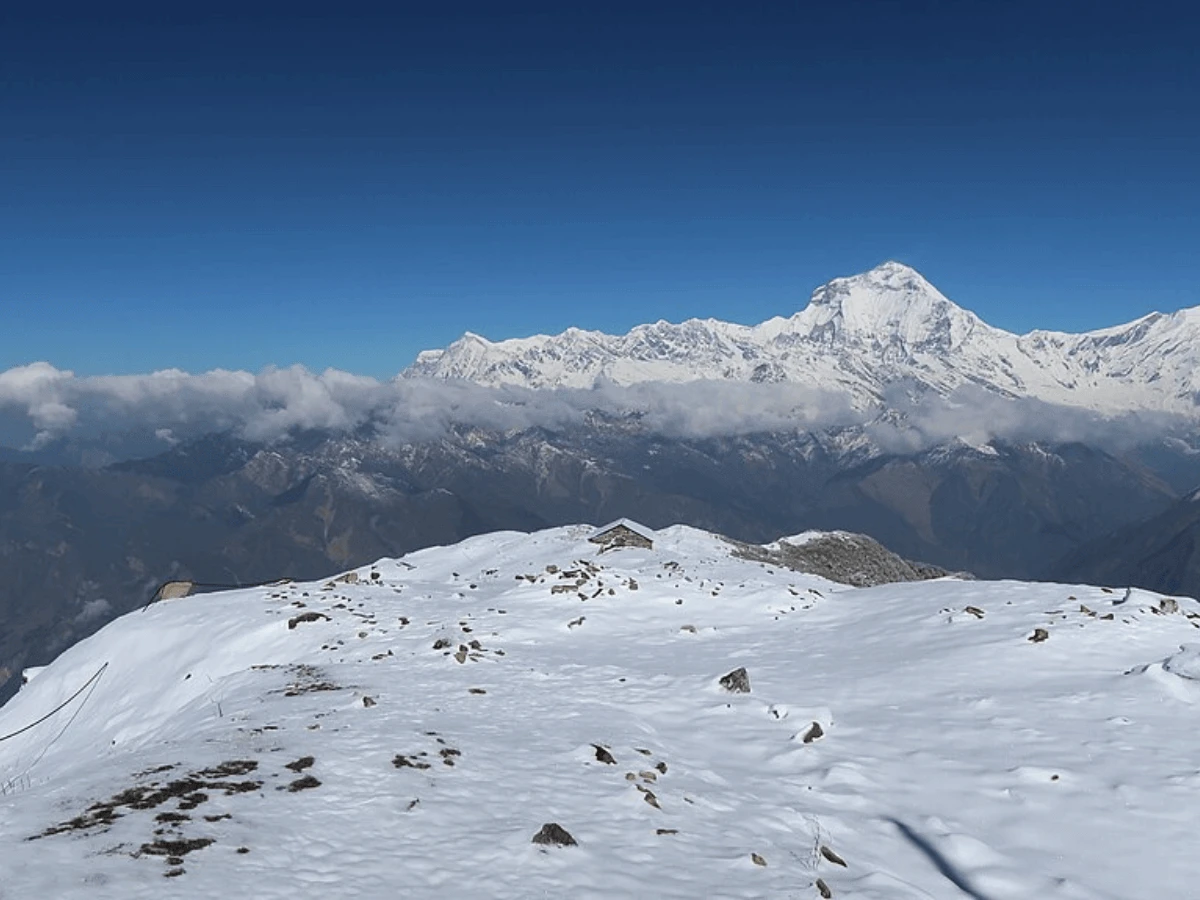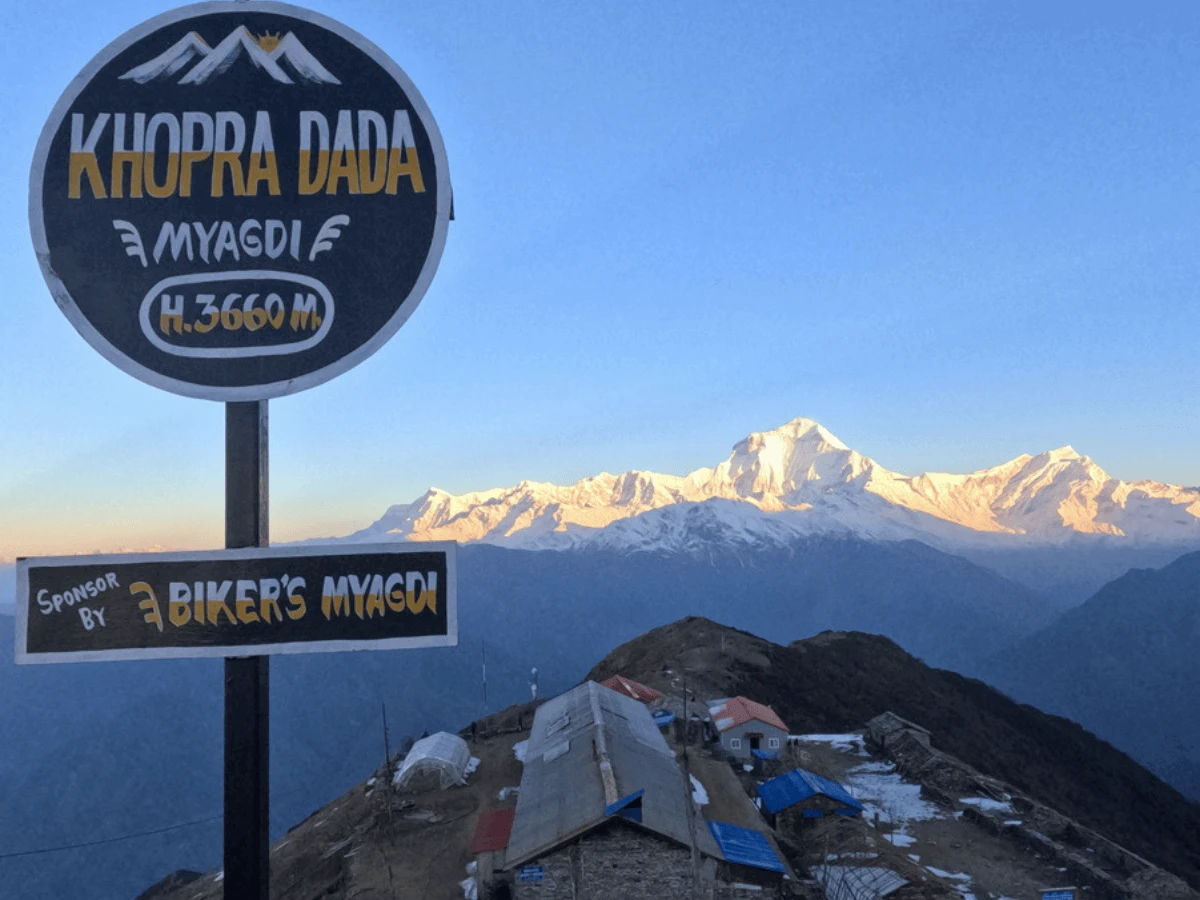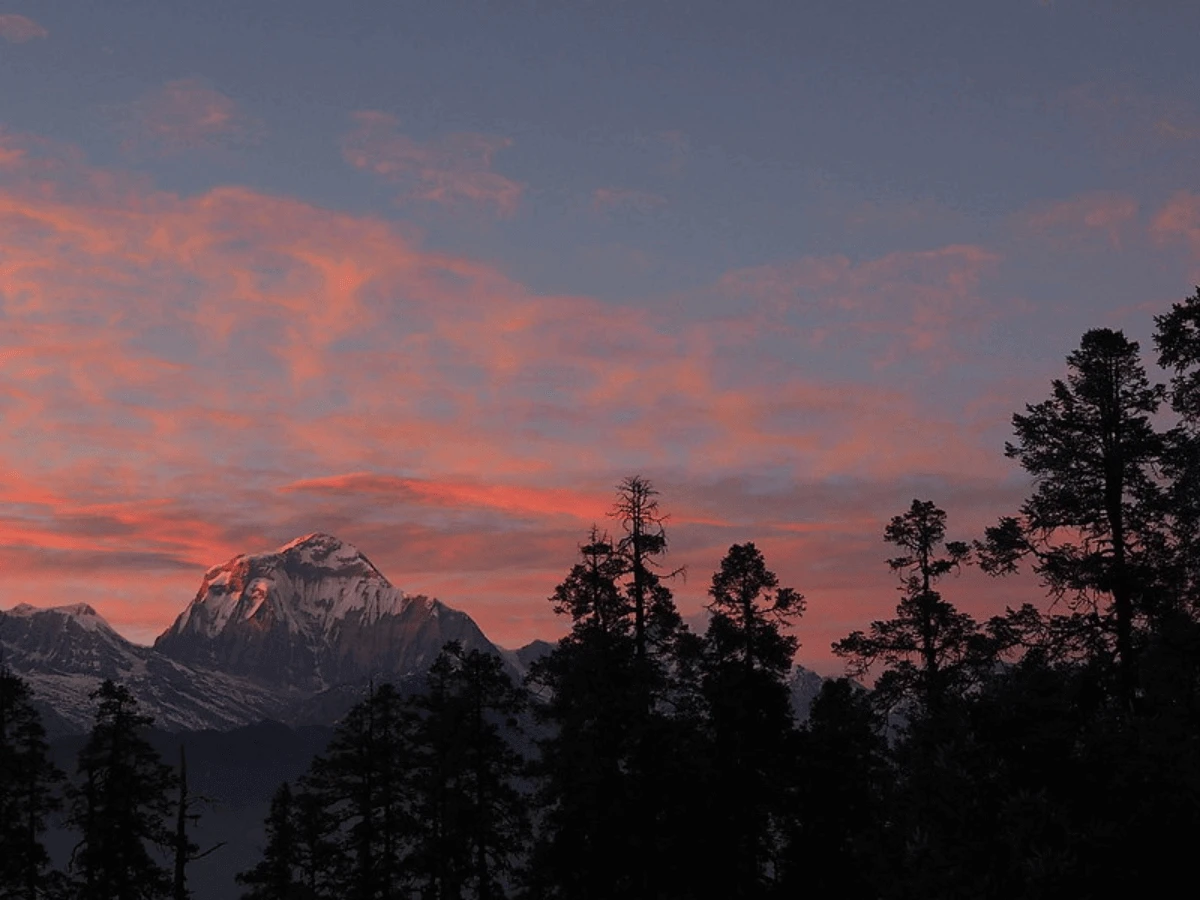The Mohare Danda Khopra Trek combines two spectacular off-the-beaten-path routes in Nepal’s Annapurna region into one unforgettable journey. This 11-day journey to two of the best short treks in Nepal leads you through pristine rhododendron forests, remote Magar and Gurung villages.
Also, trek to the two breathtaking ridge viewpoints: Mohare Danda (3,300 m) and Khopra Danda (3,660 m). Trekkers are rewarded with panoramic Himalayan views of both the Annapurna and Dhaulagiri ranges, including close-ups of Annapurna South, Machhapuchhre (Fishtail), Nilgiri, and the 8,167 m Mt. Dhaulagiri.
The Mohare Danda Khopra community trek remains less crowded, unlike the popular Annapurna Base Camp Trek. It is because these routes have been developed recently as part of the Annapurna-Dhaulagiri Community Eco-trail, a local initiative pioneered by Dr Mahabir Pun. The trail was founded to promote sustainable tourism in the rural areas of the Annapurna Region.
Along this trail, you’ll stay in community lodges and homestays run by local villagers, ensuring your travel benefits the community directly. Each day brings rich cultural encounters – from sharing meals with host families to learning about traditional farming, cheese production, and even visiting a village school.
Moreover, the Mohare Danda Khopra Trek is also beginner-friendly and suitable for active families with children. The pace is moderate (4–7 hours walking per day on average), with plenty of time to acclimatise and enjoy the scenery.
Your experienced guide from Mountain Eco Trails will ensure everyone’s safety, adjusting the itinerary if needed based on the group’s fitness and weather conditions. In short, this trek offers an ideal blend of adventure and comfort – a remote wilderness experience with the reassurance of expert support, comfortable lodgings, and a family-friendly environment.
Trek to Mohare Danda in 5 Days – The Community Lodge Experience
If you want to do the Mohare Danda Trek only then, you can do it within 5 days from Pokhara. The Mohare Danda Trek is often touted as one of the best short treks near Pokhara. The Mohare trail can be completed in as little as 5 days from Pokhara (or 7 days if starting from Kathmandu, including travel time). This section of the combined itinerary covers the journey from the trailhead up to Mohare Danda (3,300 m), giving you a taste of Nepal’s first community eco-trek.
Why Mohare Danda Trek? Even as a standalone 5–7 day trip, Mohare Danda is a fantastic choice for an easy short trek near Pokhara. It’s eco-friendly and community-based, which means you trek with purpose – your visit helps uplift the local economy and encourages preservation of culture and nature.
Khopra Danda Trek from Pokhara – Offbeat Trekking to Khayer Lake
Another best short trek near Pokhara is the Khopra Danda Trek, also known as the Khopra Ridge Trek. It is another less-travelled gem in the Annapurna region. Usually, it takes about 8–10 days from Pokhara. It can be combined with Mohare Danda or approached via the more common Ghorepani–Tadapani route. In our combined itinerary, after reaching Mohare Danda, we trek towards Khopra Danda (3,660 m) by way of Swanta and Chistibung villages. If you were starting this trek from Pokhara directly, a typical approach is to begin at Ghandruk or Tatopani, but the Swanta/Chistibung route we take is what connects it seamlessly with Mohare Danda.
Khopra Ridge positions you dramatically above the Kali Gandaki gorge, almost directly facing Annapurna South. The viewpoint at Khopra Danda offers some of the closest and most awe-inspiring views of the Annapurna range’s southern flank and the mighty Dhaulagiri range on the opposite side. If you want to do the Khopra Danda Trek only then, you can do it within a week or more. Mountain Eco Trails offers you a separate Khopra Danda Trek Package as well if you want to skip Mohare Danda.
Why Choose the Mohare and Khopra Danda Trek?
If you crave a trekking experience away from the crowds, Mohare–Khopra is ideal. As noted, these trails receive fewer visitors than Annapurna Base Camp or Everest region treks. You’ll often trek in peace, hearing just the sounds of nature – bird calls, river streams, and the crunch of your boots – rather than a train of trekkers.
Moreover, explore two Incredible Viewpoints in One Trek. This combined trek gives you both Mohare Danda and Khopra Danda, each with a unique angle and panorama. On this trek, you stay in community-run accommodations where you are directly contributing to the local communities. Plus, it is not only about mountain views, but also about experiencing the authentic local culture of the Gurung and Magar communities.
Moderate Difficulty & High Reward: Not everyone has the time or desire to trek for three weeks or tackle extreme altitudes. This combined trek stays below 4,000 m for sleeping (Khopra is 3,660 m, which significantly lowers the risk of severe altitude sickness) and can be completed in under 2 weeks. It’s a relatively easy trek in terms of altitude and duration, yet it yields world-class scenery on par with longer, tougher treks.
Best Seasons of the year to do the Mohare and Khopra Trek
The ideal times to undertake the Mohare Danda Khopra Trek are spring (March–May) and autumn (September–November). During these months, the weather in the Annapurna region is generally stable with clear skies. The blue skies offer the best views of the surrounding mountains. Spring brings blooming rhododendrons that turn the forested hills scarlet and pink. Meanwhile, autumn offers crystal-clear air and the post-monsoon freshness with festive cultural vibes in the villages (coinciding with Dashain and Tihar holidays).
How Much Does the Mohare–Khopra Danda Trek Cost?
One of the frequently asked questions is the cost of this combined trek. Mountain Eco Trails prides itself on offering all-inclusive, great-value packages with no hidden fees. The Mohare Danda Khopra Trek cost depends on group size and any custom additions, but here’s a breakdown based on our current 2025 rates:
- 1 trekker (solo/private trip): USD 920 per person
- 2–5 trekkers: USD 850 per person
- 6+ trekkers (group discount): USD 750 per person
Trek with Mountain Eco Trails – Your Partner for the Best Community Trek in Nepal
Mountain Eco Trails has been organising the Mohare Danda and Khopra Danda Trek for the last few years with great expertise and experience. We are a government-registered trekking company offering treks and tours in Nepal, ranging from Annapurna to Everest. Here are the reasons why you should book this trek with Mountain Eco Trails:
- Professionals with an expert trekking guide, porter, and crew members.
- Flexible and tailored itineraries.
- Hassle-free last-minute booking arrangements.
- Complimentary services like trekking poles, a duffel bag, a SIM card, and a basic first aid kit.
- An hour trekking, a Massage after the trekking on a full board package.
- Farewell dinner before the departure of the trek with team officials.
Want to know more details regarding the Mohare Danda Khopra Trek? Feel free to contact us via email or WhatsApp at +9779849790153.




.webp)

